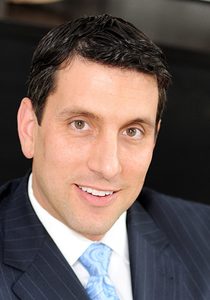Digital Strategies and the Changing Role of Call Centers: From Cost to Revenue Center
// By Robin Snow //
 Call centers in health care used to be treated like the ugly stepchild of the health system, banished to the basement of some administrative building and populated with low-performing employees. Because it was seen as a necessary evil, most executives treated the call center as a cost center. Under this perception, most measures and initiatives related to the call center focused on cutting costs to increase the return on investment. And to be fair, staffing needs, technology updates, and equipment do require large amounts of capital.
Call centers in health care used to be treated like the ugly stepchild of the health system, banished to the basement of some administrative building and populated with low-performing employees. Because it was seen as a necessary evil, most executives treated the call center as a cost center. Under this perception, most measures and initiatives related to the call center focused on cutting costs to increase the return on investment. And to be fair, staffing needs, technology updates, and equipment do require large amounts of capital.
But this is changing. Per A.J. Melaragno, president of Singola Consulting, health care should follow the lead of other industries and see call centers not as a necessary evil but as an integral part of a sales and revenue chain.
As the overall health care industry shifts toward preventive care and population health strategies, a funny thing is happening to the world of call centers: With the right strategies and changes, a call center can be transformed into a revenue generator that not only increases the ROI and produces a better bottom line but also improves customer service and results in happy patients and physicians alike.
The Omnichannel Contact Center

A.J. Melaragno, president of Singola Consulting
As this change happens, old-fashioned call centers no longer have a place in the health care industry, Melaragno argues. Instead, technology upgrades, process improvements, and staff development result in an omnichannel contact center. This new contact center is much more than a traditional call center. It acts as a central hub and provides patients with a single place to navigate to receive services across the enterprise. With this new structure in place, patients no longer must repeat information over and over to schedule services across departments. A fully functioning omnichannel contact center gives patients, physicians, and the community-at-large the freedom to choose how and when they interact with their health system. This drives customer satisfaction as well as increased engagement, a prime goal of your digital strategies.Melaragno and his colleagues at Singola Consulting based in Chicago have developed and implemented advanced contact centers for their health care clients. These upgraded contact centers can handle emails, web chat, SMS (text), inbound voice calls, self-service interactive voice response (IVR), and social media while ensuring that any information that comes “in” through one channel is transferred to all other channels in real time. If a patient calls to make an appointment, the agent on the phone will see if the patient sent an email inquiry before calling or if the patient receives SMS messages about medication issues. Patients expect this integrated experience when interacting with other industries, and health care is no exception. They want to find answers to their questions at their convenience, and omnichannel contact centers give health systems the means to provide this level of availability and service to meet consumer needs and ultimately improve the patient experience.
Melaragno says, “Beyond the standard functions of traditional call centers, which reactively provide help to those who ask for it, a functional omnichannel contact center can proactively reach out to those who may need help managing their care or who have open orders waiting to be scheduled. This synergistically amplifies your other engagement strategies.”
The omnichannel contact center can proactively reach out to schedule health screenings for those who need them. It can also display profiles of care gaps for every patient who interacts with the health system.
Open orders alone are a large part of the revenue opportunity of an effective omnichannel contact center. When a patient visits his or her primary care physician, receives a referral to see a specialist, and then leaves without the appointment scheduled, a health system loses the revenue from the follow-up appointment, and the patient’s health may deteriorate if the appointment goes unscheduled. We all know how it goes: Patients get busy or do not prioritize their health. The longer the order sits open in the system, the longer the organization misses an opportunity to make money. Those open orders eventually add up; just ask Singola’s clients, some of whom had upward of $2 million of unscheduled orders waiting to be acted upon.
Process changes and improvements can help lower the rate of open orders entered into the system in the first place, but an omnichannel contact center can use the resources it already has to prompt agents, and even patients themselves, to schedule those appointments and move forward with their prescribed care.
Creating a Comprehensive Engagement Strategy
When this new type of contact center prompts agents to contact patients, this is only a part of the new overall “reaching out” strategy. A comprehensive successful strategy starts by matching patient contact preferences to the center’s outbound modalities. In this way, omnichannel contact centers can now provide better and more efficient service to all patients, even those who seek access during off-hours.
Melaragno and Singola want their clients to go a step further. By taking into consideration patient preference, a health system can build more effective engagement strategies. Beyond open orders, the omnichannel contact center can proactively reach out to schedule health screenings for those who need them. It can also display profiles of care gaps for every patient who interacts with the health system. For example, if a patient calls to refill a prescription, the contact center technology can prompt the agent on the call to inquire about other health-related needs, such as scheduling a mammogram or a diabetes follow-up visit. The system’s technology could even connect the patient with an RN to do a post-discharge transition assessment or to schedule a follow-up visit with the primary care physician to reduce the chances of readmission.
“Prioritization efforts within the contact center work to make sure the patients with the highest risk are reached first, which includes those already diagnosed versus those in need of preventive care measures,” says Melaragno. “These active measures help patients stay healthy while generating revenue at the same time.”
New contact centers also generate revenue by leveraging new technology. Advanced speech analytics allow health systems to harness the large amount of data that patients provide the system every time they connect through the contact center and give shape to the “voice” of the customer. This voice goes beyond standard quality monitoring and into analysis that makes meaningful measurements and leads to smart business decisions.
Patients and customers say a lot if one is willing to listen. Melaragno cites an experience he had with mammogram scheduling, when a health system he worked with started to receive an uptick in requests for mammograms. Using advanced speech analytics in the contact center, the health system analyzed what the customers were saying and found the reason for the surge: A local competitor had reached capacity and could not schedule appointments for many months. The contact center alerted marketing to this business opportunity, and the next day ads were placed all over the city advertising the health system’s same-day mammogram availability. By analyzing that initial uptick, the health system capitalized on an opportunity that led to a flood of new appointments and brought new patients into the system. “It was a big win,” says Melaragno.
Healthier Patients and Healthier Health Systems
The new omnichannel contact center will transform health care and contribute to both healthier patients and healthier health system finances. It provides better service for inbound contacts and executes effective outbound contact strategies to create and drive patient engagement.
Appointment reminders, medication follow-up, and bill payment are all ways to help patients feel cared for while bringing in revenue. If you are looking for a way to provide a holistic customer service strategy, make customers happier, and generate revenue, look no further than the hidden health system call center.
Robin Snow is founder and principal of Aefinity Interactive, LLC. He has more than 35 years of experience in health care advertising, marketing, and strategic planning. Over the past 15 years, his specialized experience has been in the planning and implementation of ehealth, integrated marketing, and digital business strategies for hospitals and health systems across the country.
